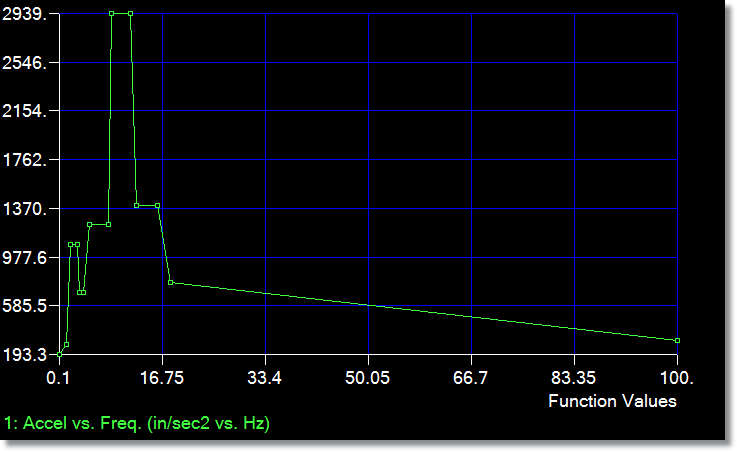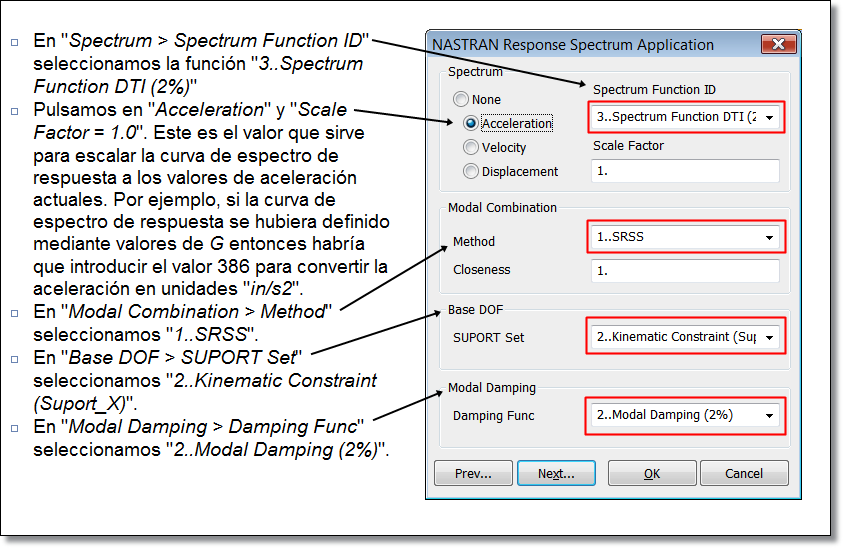Navigation
Install the app
How to install the app on iOS
Follow along with the video below to see how to install our site as a web app on your home screen.
Note: This feature may not be available in some browsers.
More options
-
Congratulations waross on being selected by the Tek-Tips community for having the most helpful posts in the forums last week. Way to Go!
You are using an out of date browser. It may not display this or other websites correctly.
You should upgrade or use an alternative browser.
You should upgrade or use an alternative browser.
Acceleration (Vibration) Of source unit in multiples if G 2
- Thread starter ninjaz
- Start date
- Status
- Not open for further replies.
- Thread starter
- #3
-
1
- #4
BlasMolero
Mechanical
Dear Ninjaz,
G level is a "convenient" way to define an acceleration we use a lot in Dynamic analysis with NX NASTRAN, for instance in Response Spectrum Application usually the excitation curve is defined in G levels vs. frequency (Hz), or sometimes directly in real acceleration vs. frequency -- see the following image. Is also typical in Modal Frequency Response (SOL111) or Transient Dynamics (SOL112) with Enforced Base Motion with the structure being forced at a base node with a 1g sinusoidal (Seismic) loading condition.

But do not get confused, soon or later we enter in the FEA package the real value of acceleration used, ie, 1 G = 9.81 m/s2, (or the equivcalent value in the system of units used in the FE model). In the following picture we use Acceleration Scale Factor = 1.0 because the above excitation curve of response spectrum acceleration was defined in in/s2 vs. freq (Hz). Alternatively, you can define the excitation curve of acceleration in Gs vs. Freq. (Hz), and use an acceleration scale factor when defining the loading as 1G = 386.4 in/s2, then is up to you, we are talking the same all the time, OK?.

Best regards,
Blas.
~~~~~~~~~~~~~~~~~~~~~~
Blas Molero Hidalgo
Ingeniero Industrial
Director
IBERISA
48011 BILBAO (SPAIN)
WEB: Blog de FEMAP & NX Nastran:
G level is a "convenient" way to define an acceleration we use a lot in Dynamic analysis with NX NASTRAN, for instance in Response Spectrum Application usually the excitation curve is defined in G levels vs. frequency (Hz), or sometimes directly in real acceleration vs. frequency -- see the following image. Is also typical in Modal Frequency Response (SOL111) or Transient Dynamics (SOL112) with Enforced Base Motion with the structure being forced at a base node with a 1g sinusoidal (Seismic) loading condition.

But do not get confused, soon or later we enter in the FEA package the real value of acceleration used, ie, 1 G = 9.81 m/s2, (or the equivcalent value in the system of units used in the FE model). In the following picture we use Acceleration Scale Factor = 1.0 because the above excitation curve of response spectrum acceleration was defined in in/s2 vs. freq (Hz). Alternatively, you can define the excitation curve of acceleration in Gs vs. Freq. (Hz), and use an acceleration scale factor when defining the loading as 1G = 386.4 in/s2, then is up to you, we are talking the same all the time, OK?.

Best regards,
Blas.
~~~~~~~~~~~~~~~~~~~~~~
Blas Molero Hidalgo
Ingeniero Industrial
Director
IBERISA
48011 BILBAO (SPAIN)
WEB: Blog de FEMAP & NX Nastran:
-
1
- #5
GregLocock
Automotive
Vibration is often measured in terms of acceleration, and obviously needs some units. 1 g is an acceleration of 9.81 m/s/s or 32.2 fpss.
Confusingly for the statically minded loads are oftem mentioned as being in g, for example I'd refer to a 0.9g load on a wheel. That merely means the weight multiplied by 0.9.
Newton says that's OK.
Cheers
Greg Locock
New here? Try reading these, they might help FAQ731-376
Confusingly for the statically minded loads are oftem mentioned as being in g, for example I'd refer to a 0.9g load on a wheel. That merely means the weight multiplied by 0.9.
Newton says that's OK.
Cheers
Greg Locock
New here? Try reading these, they might help FAQ731-376
- Status
- Not open for further replies.
Similar threads
- Replies
- 0
- Views
- 8
- Locked
- Question
- Replies
- 14
- Views
- 19
- Locked
- Question
- Replies
- 0
- Views
- 28
- Locked
- Question
- Replies
- 1
- Views
- 11
